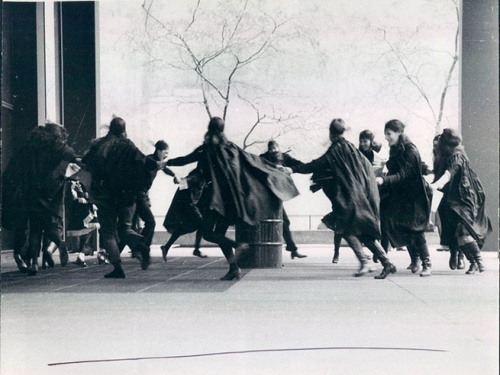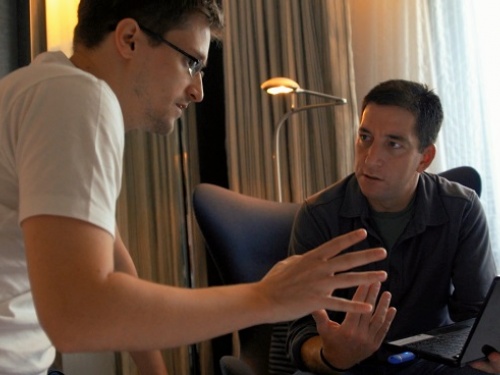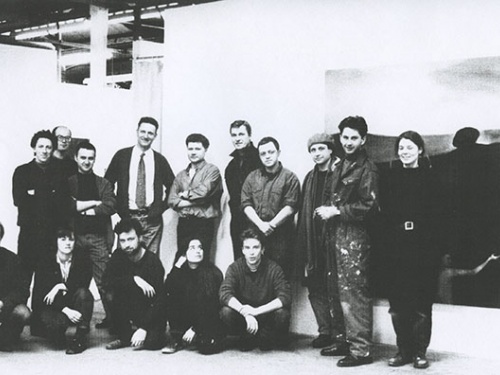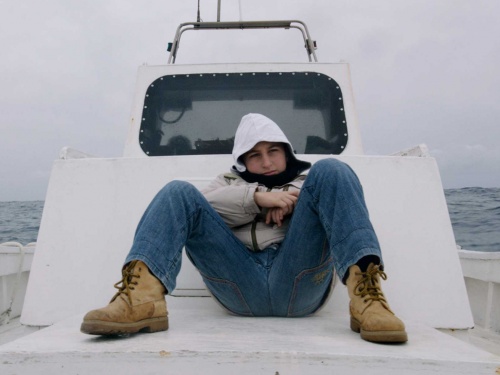Jane Scarth interviews Catherine Flood
As part of our Student Forum, Jane Scarth interviews Catherine Flood, Curator of Posters at the Victoria & Albert Museum, London. This interview is a part of a series of posts exploring last year's See Red Women's Workshop exhibition and a continuation of Jane's introduction to the workshop.
Jane Scarth: In terms of the history of British posters, what was going on at this time?
Catherine Flood: There was an explosion of grassroots poster making in the late 1960s, inspired among other things by the Atelier Populaire in Paris, and all the anti-Vietnam demonstrations in America. It was a real moment when the new left was growing and poster making became quite an important tool for communication and being active, the actual act of producing a poster was a political act. Screen printing is extremely important because it had been revived through pop art. It was being taught in the art schools, and so there were a lot of activists and protesters coming out of art school who had been taught screen printing, so it was quite an obvious thing for them to set up and do.
JS: What does it mean for feminists to form a collective, do you feel that See Red counteract the masculine careerist framework?
CF: In that contemporary moment, to explore a non-patriarchal structure for producing art was really important for them. I remember Susan Mackie, [co-founder of See Red] came up with this fantastic quote about how they would meet men they had been to art school with who just couldn’t understand this collective working thing and with a bit of a pun they would ask ‘who holds the pencil.’ It was apparently something they had trouble understanding.
JS: Art historically, how do you think we can approach the work of See Red today, are these objects artefacts or an archive?
CF: I do think it has an incredible relevance right now. I think through the occupy movement there has been a revival of interest in that. One really good example would be the Occupied Times, which is the newspaper that came out of the St. Pauls occupation and which has kept going. They operate as a collective and take all of their design decisions as a group. There is a revival about collectivity. And I’m thinking just generally about protest, in not just accepting things the way they are. I think since 2011 that’s quite high on people’s agendas. Also the feeling that because of the economic situation and funding cuts, more and more students are finding that they’re needing to make their own channels, their own models for work instead of just fitting into institutions. All those things mean that it is really important to look back at what happened 40 years ago.
JS: I was wondering if you could you comment on how political posters function as a call to action, how they communicate an idea of inclusivity and ask something in return from the viewer?
CF: Posters can work on very different levels; sometimes there is a very heavy-handed propaganda message, it’s telling you to do something. A lot of the feminist posters are interesting because they don’t really do that, they’re either providing alternative images of women or very often raising questions, rather than providing definite answers. It’s not always an obvious or definite call to action, it’s more about promoting a debate. They would go to consciousness raising groups and the themes they pull out would come from those and then they would work them into their own collective structures. It was very into this idea of debate as opposed to being told. You find that with a lot of other ‘70s collectives who started to produce posters as a series, working more with text and historical references, actually resisting this idea that they are just going to be an advertising service for the left. They actually wanted to find a different way of communicating that’s not just telling or trying to seduce people.
JS: Why is print media not being used in the same symbolic way?
CF: The Internet has changed it hugely. It’s interesting because I think the Internet convenes much broader, fluid types of communities. What is interesting about ‘70s printing collectives is that there was a physical space, so you had your printing equipment, your group of really committed people, and that became a focus for all kinds of discussions, a space where they would teach other people how to make prints. Sometimes other groups would print posters for other causes, so there would be this flow of actual physical people coming through that space. They used to be much more ideologically tight, in a way having to agree on more than these quite broad groups you get now.
JS: The physical space issue seems to be something that is being addressed by some of the new experimental grassroots education facilities that have surfaced recently.
CF: It’s part of the feeling that making things in itself can be quite empowering, you don’t have to be a passive consumer. You can make things and everything doesn’t have to happen in this closed digital space. I think the feminist project of educating people is very powerful, the whole idea of demystifying different professions and breaking down that hierarchy, such as the artist being someone who is above society. It’s the idea that anyone can be a designer; it’s not something special, you can pass on those skills. It’s part of a major reworking of the idea of what the artist is in society.
Catherine Flood
Curator of Prints, Posters, and Graphics, Victoria & Albert Museum, London.
Author of British Posters: Advertising, Art and Activism (V&A Publishing: London, 2012).
See Red Women’s Workshop was held at the ICA from 4 December 2012 - 13 January 2013.
This article is posted in: Student Forum
Tagged with: Jane Scarth, Q&A, V&A, Feminism, Posters, Printing





